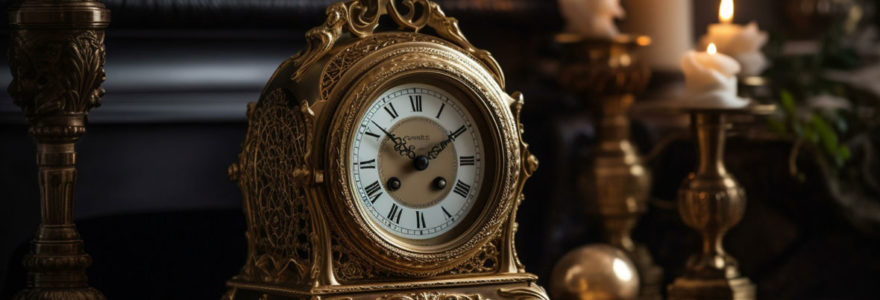Antique mantel clocks, with their intricate designs and timeless charm, hold a special place in the hearts of collectors and interior design enthusiasts alike. Their preservation and care, however, pose unique challenges. These beloved timekeepers require a keen eye to identify possible damages, a gentle hand for maintenance, and an understanding of appropriate cleaning techniques to retain their original allure. This guide delves into the art of antique clock restoration, providing invaluable insights into conserving mantel clocks and ensuring they continue to tick beautifully for generations to come.
Preserving the Timeless Beauty of Antique Mantel Clocks
Antique mantel clocks, with their grandeur and elegance, hold a timeless beauty. Resplendent with old charm, these pieces of fine furniture often adorn homes, adding a touch of history and artistry. Preserving their original allure and functionality requires understanding certain aspects. This includes recognizing common damages, knowing the right materials to maintain their finish, and understanding how to conserve the original parts.
Identification of Common Damage in Antique Clocks
Preserving antique clocks starts with recognizing the usual signs of wear and tear. Distortions on the surface, a ticking clock with stationary hands, and an old clock that has stopped completely are all common indications of a need for care and attention. It's imperative to handle these delicate items with care to prevent further deterioration.
Essential Materials for Preserving Your Clock's Finish
Antique mantel clocks, particularly those made of wood, require specific materials to maintain their exterior. Regular cleaning and polishing help to preserve the natural sheen of the wood and prevent the accumulation of dust, which can lead to scratches. A soft cloth and a gentle, non-abrasive cleaner should be used to avoid damage.
Maintaining the Original Parts of Your Antique Clock
One of the key aspects of antique clock conservation is the preservation of the original components. This includes the winding mechanism, hands, and internal parts. Regular winding, coupled with gentle cleaning, can help keep the clock's interior mechanism functional. Furthermore, inappropriate storage can lead to degradation, so it's crucial to store these clocks in a safe, dry place at home.
Mastering the Art of Antique Clock Cleaning and Restoration
Preserving the beauty and functionality of antique mantel clocks requires a deep understanding of the art of clock cleaning and restoration. Antique clock restoration demands meticulous care, as even a small error can lead to irreversible damage. To start, the polish used on the clock case should be gentle enough to clean without causing harm to the original material. Always remember to remove all parts of the clock before beginning the restoration process, to ensure all areas are adequately cleaned and polished.
The repair work must be done cautiously, using only parts that are compatible with the clock's original design. Occasionally, it may be necessary to have new parts custom made to fit the unique specifications of the antique clock. In such instances, professionals at shops specializing in clock repair and restoration, like lapendulerie.com, can be of great help. They possess the required knowledge and experience to restore the clock to its former glory while ensuring no further damage is caused.
After the repair and restoration work is completed, a layer of wax is used to protect the clock case and enhance its shine. This is not just about aesthetics, but also about preserving the clock for years to come. Therefore, mastering the art of antique clock cleaning and restoration is more than a casual hobby; it is a commitment to preserving a piece of history.
Understanding the Intricacies of Mantel Clock Conservation and Care
In the realm of antique collections, mantel clocks hold a significant place due to their elegance and mechanical complexity. Proper care and understanding of their movement intricacies are essential for their longevity. Despite the intricate nature of these timepieces, a comprehensive guide helps in preserving their beauty and functionality.
Proper Winding and Time Setting Techniques
Winding mantel clocks require a delicate touch, with the pendulum playing a pivotal role. The pendulum's oscillating movement drives the clock's hands, and incorrect use may cause damage to the delicate mechanism. A visual guide serves as a handy tool in mastering these techniques. For clock enthusiasts, an intricate understanding of the movement history over the years could be quite beneficial.
Procedures for Cleaning and Polishing Clock Surfaces
Preserving the physical appearance of mantel clocks is equally important. Different materials like wood and metal need varying care techniques. A thorough cleaning and polishing guide helps to maintain the clock's original charm without causing any harm to the materials.
Storage and Display Tips for Your Antique Clock Collection
Proper storage conditions significantly contribute to the lifespan of antique clocks. Factors such as temperature, humidity, and sunlight exposure can affect their condition. Therefore, having a comprehensive checklist for storage and display can help in maintaining their original state.
